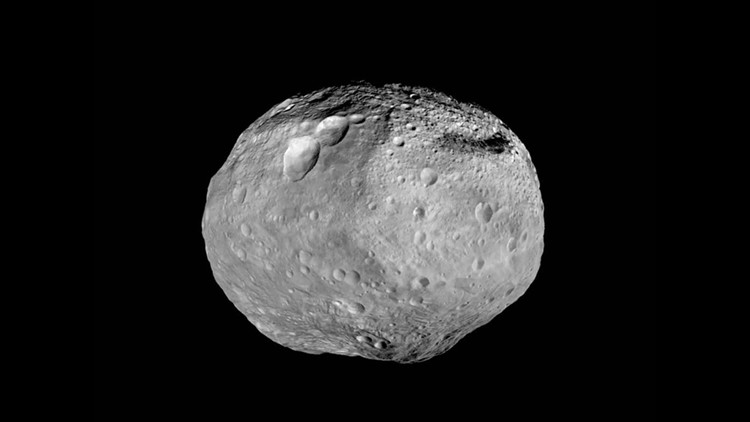GODDARD SPACE FLIGHT CENTER, Maryland — It may sound like a science fiction movie, but in a small conference room at the Goddard Space Flight Center, a tight-knit group of top NASA scientists is coming up with new ways to protect our planet from killer asteroids.
The idea is to repurpose and build on technologies being developed for other space missions.
How big is the threat from asteroids?
Well, Jason Kessler, NASA’s director of the Grand Challenge, says that as of Wednesday morning asteroid hunters around the world have identified and are tracking 12,706 Near Earth Objects (NEOs) — or asteroids – that could come close to Earth.
“Of those 1,593 are potentially hazardous, meaning they might cross earth’s path,” he said.
Another 800 of the total tracked asteroids are a kilometer or more in length. Some of those — 152 — also have the potential to cross the Earth’s path, something Kessler said would be, “devastating.”
“We have discovered about 95 percent of the one kilometer or larger asteroids, that’s roughly the size of the one that is thought to have wiped out the dinosaurs upon impact,” he said in an earlier interview with CNN. “Unfortunately we only know about roughly 1 percent of those asteroids that get down to the 30 meter size, so there’s a tremendous amount out there that we have yet to discover.”
He added there are “potentially hundreds of thousands” of smaller asteroids headed this way that have not yet been identified.
The Grand Challenge program, which is celebrating its second anniversary on Thursday, invites everyday people to help NASA, “track all asteroid threats to human populations, and to know what to do about them,” Kessler said.
With that in mind, Ben Reed, who heads up the team that is developing NASA’s Asteroid Robotic Redirect Mission, is bringing together scientists from across NASA who are working on several different space missions — and using their expertise to help develop an American built asteroid lander.
Reed said that with technology being developed today, the lander could eventually be programmed to change the course of a rogue asteroid. The lander, he said, could use its thrusters to nudge an asteroid off a collision course with Earth. Or alternately, he said, the lander could use its own gravitational pull to make slight changes to an asteroid’s trajectory if it is deemed a threat.
That same lander could also pick up a piece of an asteroid, store it in its cargo bay and bring it back to earth for scientific study, Reed said.
“We have the technologies to be able to do it, and the same technology is needed to capture asteroids,” he said.
His teams have taken over a warehouse-sized room called “the Cauldron” at the Goddard Space Flight Center just outside Washington. Their mission is to test all these new robotic technologies and to figure out ways to apply them to future space missions. Scientists positioned an SUV-size mock-up of a giant asteroid, alongside two life-size satellites.
Robotic arms were also being tested to run simulations of future satellite retrieval and repair missions. And, of course, they had a prototype of a small lander that could use specially outfitted retracting legs to land on an asteroid, pick up a sample and bring it home.
Scientists working on a future manned mission to Mars were also on hand to discuss fueling options. Their team is experimenting with xenon fuel tanks, and say those tanks could be re-purposed to help power an asteroid lander — which would need to travel millions of miles into space, and then return home.
Another team working on a robotic arm that will be used aboard the International Space Station, says the technology running the arm could also be re-purposed to help capture a piece of an asteroid.
Reed said all space missions are linked, and that in every mission, “Humans and robots are working together on a client that’s in space, that accesses robotics and advanced tools … So the fundamentals of this (asteroid) mission are no different.”
He said NASA’s job is to “push the boundaries and to push the envelope” on what technology can be used for.
Even as they explore their options, Reed said asteroids pose no real threat to Earth.
“We have the technologies to mitigate any potential threats,” he said.
Kessler said though the data sounds menacing, “Nothing we know of is threatening Earth right now.”
Well, aside from the 98 percent of asteroids that have yet to be discovered.



